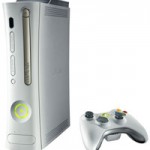If you were born after 1960 or so you will realise how frightengly rapid technology is progressing and changing. In the first half of the 2000s, retailers were buzzing about the wonders of MP3 players and netbooks, but by the end of the decade, those products had largely been replaced by smartphones and tablets.
We will all have to face the facts – some of the gadgets you may currently rely on will disappear or made obsolete by the end of this decade in 2020, no longer be produced for a mass-market audience.
In this largely speculative article we ask the question: Which popular products today will join the likes of VCRs, cassette players and transistor radios disappearing from the shelves and our lives forever? (except perhaps in an antique collection)
The days of spending R1500 or more on a standalone GPS device won’t last much longer, analysts say. “Portable navigation devices like those sold by TomTom and Garmin will probably not be sold in 2020, just because mobile phones will have taken on that function themselves and because GPS systems will be standard equipment in cars,” says Charles S. Golvin, an analyst at Forrester, a market research firm. So here won’t be much of a need to buy a product whose only function is to tell you directions. If there is a demand for these GPS systems, it will likely come from a very specific segment of consumers, like mountaineers climbing Mount Everest or long-distance truckers or the military, but for the vast majority of consumers, standalone GPS systems will be irrelevant and redundant.
The e-reader has already undergone significant changes in its short history, evolving from a product with a keyboard to one with a touchscreen and more recently being integrated into a kind of a tablet-hybrid, but according to Golvin, the market for e-readers will mostly disappear by the end of the decade. “The tablet will largely supplant the e-reader in the same way that the iPod increasingly gets displaced by smartphones,” Golvin says. “Tablets will take on the e-reader function of handling magazine, newspaper and book reading.” In essence, spending money on an e-reader that can only handle reading when tablets can do this and more will come to seem as useless as buying a GPS system that can only look up directions when other technology does this as well. Just how small the e-reader market becomes may depend somewhat on advancements in display technology. One of the biggest incentives for consumers to buy a pure e-reader is to have an e-ink display (like reading from a book) rather than a backlit display (like reading from a computer screen), but according to Golvin, manufacturers are already working on ways to merge the two reading experiences and create a tablet that doubles as an authentic e-reader. Even then, there may be still be some e-readers on the market at the beginning of next decade, but not many. “It could be that by 2020 you can still buy a super cheap e-reader for R160, but by and large, the volume of sales will be so close to zero as to be indistinguishable, like CD players are now,” he says.
A feature phone is a mobile phone that, like smartphones, combines the functions of a personal digital assistant (PDA) and a mobile phone. Today’s models typically also serve as portable media players and camera phones with touchscreen, GPS navigation, Wi-Fi and mobile broadband access.
Several of the products that are likely to be phased out will ultimately be the victim of advances to smartphones, and none more directly than feature phones. Tim Bajarin, a technology columnist and principle analyst with Creative Strategies, predicts that 80% of all phones sold in 2015 will be smartphones and every phone sold in 2018 will be a smartphone. This rapid decline will come about thanks to a drop in prices for consumers and an increase in revenue opportunities for carriers. “Even today, the money that is made is not on the phone itself but on the services,” Bajarin says, noting that carriers will opt to “fade out” their feature phone option in favor of smartphones with more services.
When Apple unveiled the iPhone 4S, smartphone competitors probably weren’t the only ones beginning to sweat. Digital camera makers also have much to be worried about. Apple’s newest phone has a killer 8-megapixel camera that takes in more light and records video at 1080p HD video. Until recently, those kind of specs were unique to digital cameras, but increasingly smartphones are taking over the market. “Flip cameras went bye-bye and now low-end camera functions are being taken over by smartphones,” says Rob Enderle, principle analyst for the Enderle Group. Going forward, consumers will have less incentive to carry around a camera when they already have a phone in their pocket that takes quality pictures. “The point-and-shooters – and particularly the cameras that sell for under R1500 – will eventually go away and be replaced by cellphones that do the same thing.” On the other hand, Enderle predicts more expensive and high-tech cameras may have a brighter future, though not by much, as a smaller market of photo enthusiasts seek out professional-quality cameras that go above and beyond what’s offered on a phone.
DVD players are in the process of being phased out now by Blu-ray players and will likely be erased from the consumer landscape by the end of the decade. “The DVD player should be replaced by digital delivery,” says Ian Olgeirson, a senior analyst at SNL Kagan, who points to streaming movie services like Netflix as being the future. “Blu-rays and whatever the next generation high-end movie format emerges could prolong the lifespan because of challenges around streaming, but eventually the disc is going to be phased out.” The idea of placing a disc into a DVD player to watch a movie will eventually seem as outdated as placing a record on a turntable.
Using CDs and DVDs to view and store content will soon be a thing of the past. “CDs are clearly not going to make it over the next 10 years because everything will shift over to pure digital distribution, so all those shiny discs will be gone,” Bajarin says. This will be due in part to more streaming options for music and movies and a greater reliance on digital downloads, combined with more efficient storage options for consumers, including USB drives, external hard drives and of course the cloud. “All a CD is is a medium for distribution of content … and within 10 years, you won’t need a physical transport medium,” Bajarin says.
Popular video game systems such as the Wii, PlayStation and Xbox may still be in homes next decade, but they will look much different. Rather than buy a separate console, Enderle expects that consumers will instead buy smart televisions with a gaming system built into it, not to mention tablets and smartphones that will continue to ramp up their gaming options. “It looks like analog game systems won’t make it until the end of the decade,” Enderle says. “You are already seeing the Wii have a tough time holding on to the market and PlayStation has been struggling for a while.” The gaming systems that will succeed in the future will be those that manage to move away from being focused solely on video games and more on other entertainment options such as movies, evolving from a traditional game console into more of a set-top box.
By Seth Fiegerman, MainStreet
















